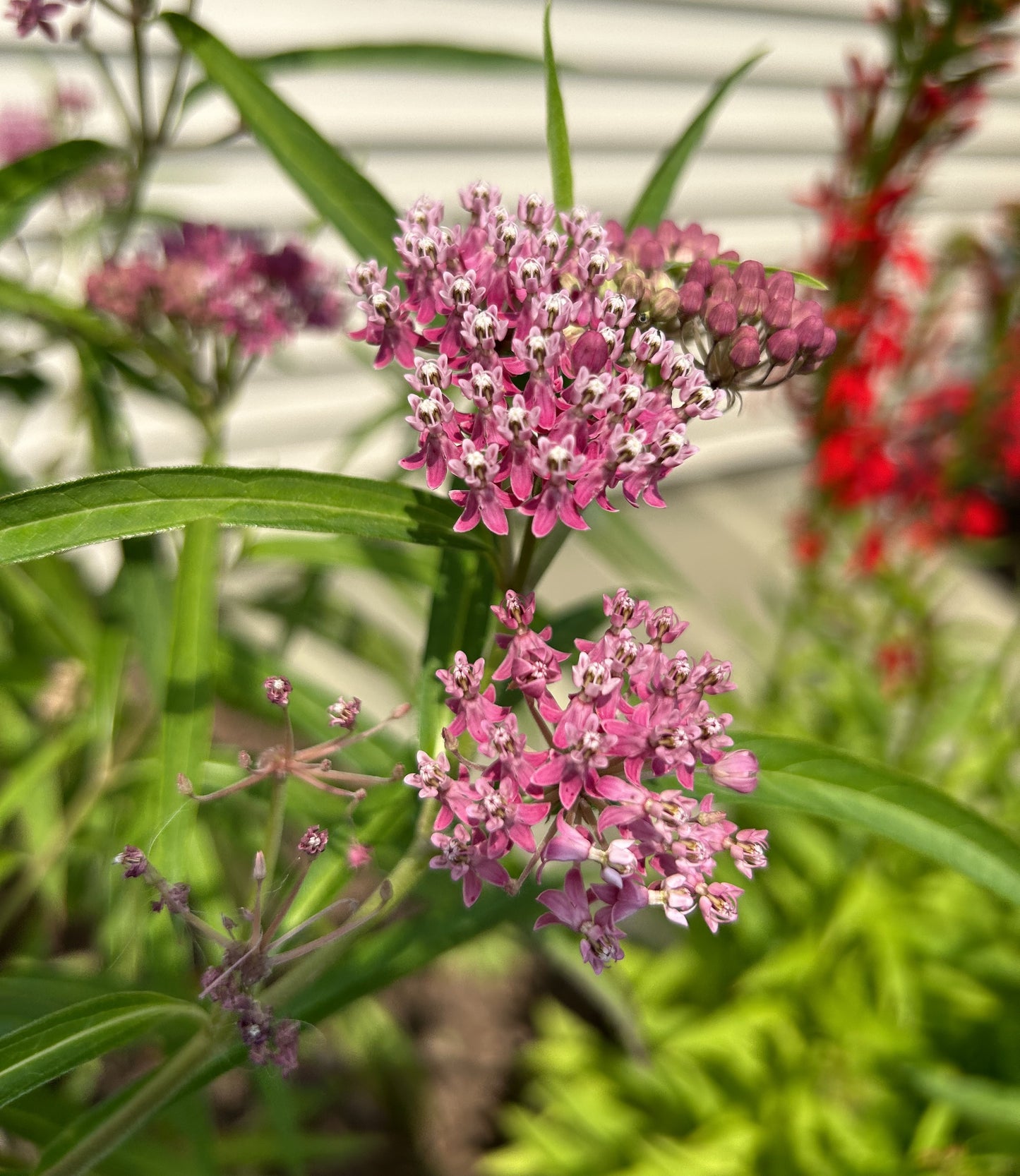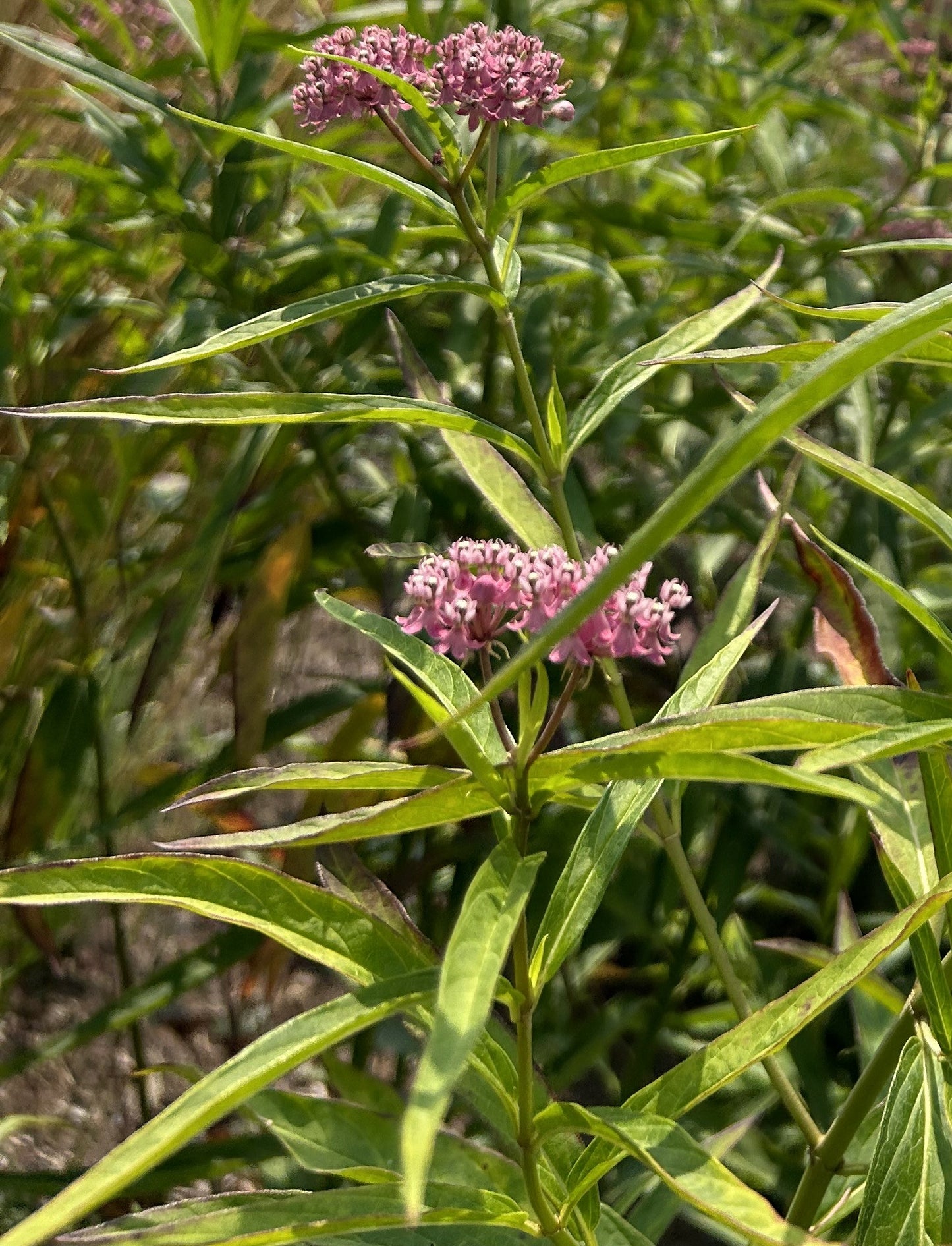stellarnatives
Asclepias incarnata 'Swamp Milkweed'
Asclepias incarnata 'Swamp Milkweed'
Couldn't load pickup availability
Asclepias incarnata, also known as Swamp Milkweed, is an important host plant for several species of butterflies, particularly the Monarch butterfly (Danaus plexippus). The leaves of the plant are the primary food source for Monarch caterpillars, and the nectar-rich flowers are a source of food for adult butterflies. In addition to Monarchs, other butterfly species that may use Asclepias incarnata as a host plant include the Queen (Danaus gilippus) and Soldier (Danaus eresimus) butterflies. The plant also provides nectar to a variety of other pollinators such as bees, flies, beetles, and moths.
It typically grows to be about 3-4 feet tall and has narrow, lance-shaped leaves. The flowers of Asclepias incarnata are pink to mauve in color and are arranged in clusters at the top of the stem. They are unique in that they have five reflexed petals and a central crown of five hooded structures called hoods, which surround the reproductive structures. The flowers bloom in the summer, typically from June to August.
Asclepias incarnata has seed pods that are typically 2-4 inches long and narrow, elongated shape. They are smooth, and usually a green-brown color when mature. They are typically filled with small, round, brown or black seeds that are attached to silky white, feathery tufts called comas. The pods typically mature and dry out in late summer or early fall, eventually splitting open to release the seeds. The seed pods are an important food source for many species of butterflies and moths, as well as birds.
This plant is tolerant of a wide range of soil types from well-drained medium soils to moist poorly-drained soils. It can grow in both full sun and partial shade. It is also tolerant of drought and is a good choice for rain gardens or other areas with poor drainage.
It prefers full sun to partial shade. It can tolerate some shade, but it will produce more flowers in full sun.
Materials
Materials
Shipping & Returns
Shipping & Returns
Dimensions
Dimensions
Care Instructions
Care Instructions










